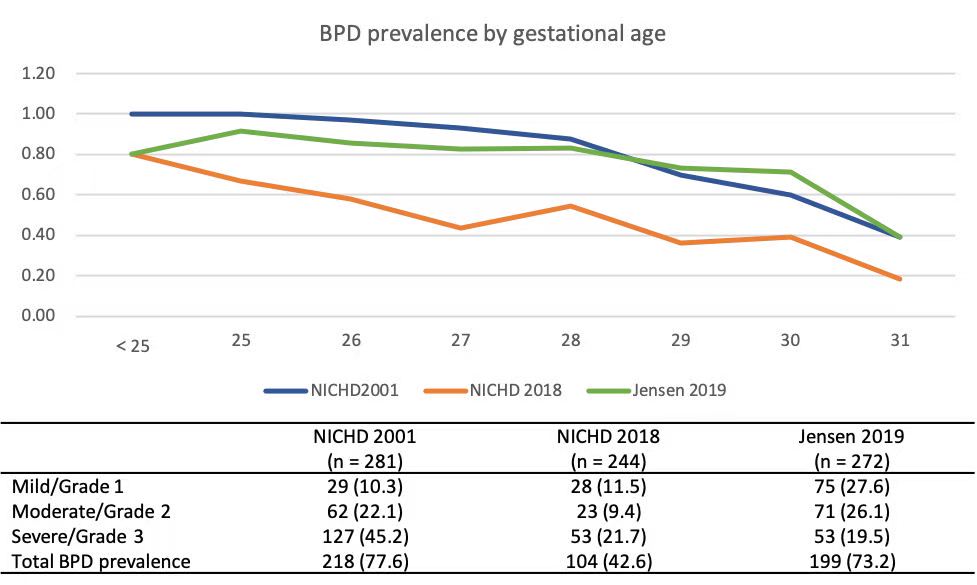Global Neonatal & Children's Health
Category: Abstract Submission
Global Child and Adolescent Health II
158 - Point Prevalence, Characteristics and Treatment Variation for Preterm Infants with Bronchopulmonary Dysplasia in China
Friday, April 22, 2022
6:15 PM - 8:45 PM US MT
Poster Number: 158
Publication Number: 158.112
Publication Number: 158.112
jianhua wang, Guangzhou Medical University, guangzhou, Guangdong, China (People's Republic); Ge Yang, Guangzhou Women and Children's Medical Center, Guangzhou, Guangdong, China (People's Republic); zhiqiang cai, Guangzhou Medical University, Guangzhou city, Guangdong, China (People's Republic); Huayan Zhang, Perelman School of Medicine at the University of Pennsylvania, Philadelphia, PA, United States

jianhua wang, Bachelor of medicine
resident
Guangzhou Medical University
guangzhou, Guangdong, China (People's Republic)
Presenting Author(s)
Background: With the rapid advance in neonatal care in China, more preterm infants are surviving and hence the incidence of bronchopulmonary dysplasia (BPD) seems increasing. However, multi-center data regarding the prevalence and management variation of the disease is lacking.
Objective: To determine the point prevalence of BPD according to 3 major BPD definitions and explore the variation in the care of BPD infants in China.
Design/Methods: We performed a multi-center cross-sectional study in 37 NICUs from the six geographical regions in China. At least one large delivery hospital and one children’s hospital from each region participated in the study. A “snapshot” clinical data on June 18, 2021 for each inpatient born at < 32 weeks’ gestation age (GA) were collected using a standardized from and data was collated centrally for analysis. BPD was defined based on National Institute of Child Health and Human Development (NICHD) 2001 criteria, as well as two newer (NICHD 2018 and Jensen 2019) definitions.
Results: A total of 1044 infants born at < 32 weeks GA were included in the study, of which 748 (72%) were born at ≥28 weeks GA, and 1000 (95.8%) were born at ≥750g. At the time of the study, 563 were ≥28 days old and 281 were ≥36 weeks postmenstrual age. The prevalence of BPD was 78.2% per NICHD 2001 definition. Compared to infants with no BPD, infants with BPD were more likely to be born before 28 weeks’ gestation and with a birth weight < 750g. They are more likely to have postnatal complications (Table 1). However, among infants that reached 36 weeks GA, the point prevalence and severity of BPD varied significantly among the 3 BPD definitions (Table 2). In centers that have >20 BPD patients, treatment of BPD, including mode of respiratory support and medication treatment varied significantly (Table 3).Conclusion(s): Point prevalence of BPD is high in China. The prevalence of BPD was lowest according to the NICHD 2018 definition, whereas NICHD2001 definition classified most patients with severe BPD. Children diagnosed with BPD have more clinical complications, and there are significant differences in the management of BPD in different hospitals. More efforts need to spend on the prevention of BPD and further measures are needed to standardize the treatment of BPD in China.
Jianhua Wang CVJianhua Wang CV.pdf
Figure 1.BPD prevalence and severity by three major BPD definitions
Objective: To determine the point prevalence of BPD according to 3 major BPD definitions and explore the variation in the care of BPD infants in China.
Design/Methods: We performed a multi-center cross-sectional study in 37 NICUs from the six geographical regions in China. At least one large delivery hospital and one children’s hospital from each region participated in the study. A “snapshot” clinical data on June 18, 2021 for each inpatient born at < 32 weeks’ gestation age (GA) were collected using a standardized from and data was collated centrally for analysis. BPD was defined based on National Institute of Child Health and Human Development (NICHD) 2001 criteria, as well as two newer (NICHD 2018 and Jensen 2019) definitions.
Results: A total of 1044 infants born at < 32 weeks GA were included in the study, of which 748 (72%) were born at ≥28 weeks GA, and 1000 (95.8%) were born at ≥750g. At the time of the study, 563 were ≥28 days old and 281 were ≥36 weeks postmenstrual age. The prevalence of BPD was 78.2% per NICHD 2001 definition. Compared to infants with no BPD, infants with BPD were more likely to be born before 28 weeks’ gestation and with a birth weight < 750g. They are more likely to have postnatal complications (Table 1). However, among infants that reached 36 weeks GA, the point prevalence and severity of BPD varied significantly among the 3 BPD definitions (Table 2). In centers that have >20 BPD patients, treatment of BPD, including mode of respiratory support and medication treatment varied significantly (Table 3).Conclusion(s): Point prevalence of BPD is high in China. The prevalence of BPD was lowest according to the NICHD 2018 definition, whereas NICHD2001 definition classified most patients with severe BPD. Children diagnosed with BPD have more clinical complications, and there are significant differences in the management of BPD in different hospitals. More efforts need to spend on the prevention of BPD and further measures are needed to standardize the treatment of BPD in China.
Jianhua Wang CVJianhua Wang CV.pdf
Figure 1.BPD prevalence and severity by three major BPD definitions

